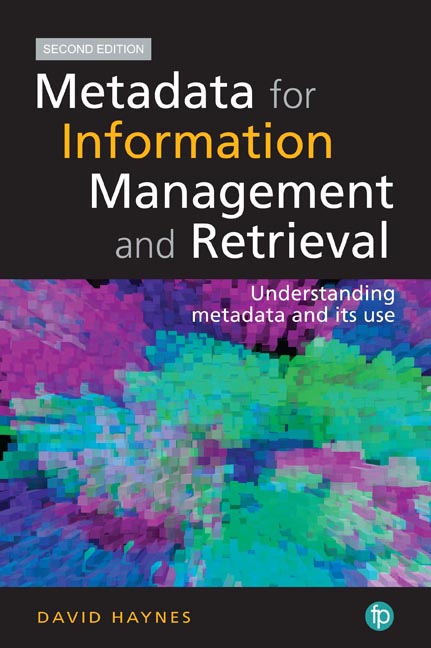12 - Taxonomies and encoding schemes
from PART III - MANAGING METADATA
Published online by Cambridge University Press: 08 June 2018
Summary
Overview
This chapter is all about the content of metadata elements. Permissive standards such as Dublin Core describe what each field or data element is for, but do not specify how the content of that data element is generated. For instance, the ‘dc:creator’ data element might contain the name of an organisation as it is known to the website manager, it might be taken from an authority file, or it may be created according to a set of cataloguing rules such as AACR2. This chapter is about the techniques or mechanisms that are used to manage and control the content of individual data elements. This is important for consistency, quality of retrieval and efficiency of operation. Controlled vocabularies, authorities and cataloguing rules all come under the heading of encoding schemes. A more detailed treatment of cataloguing can be found in Welsh and Batley (2012). The development and use of controlled vocabularies are covered in classic works such as Aitchison, Gilchrist and Bawden (2000) and more recently in Broughton (2006). Lambe (2007) and Broughton (2015) deal with aspects of classification and taxonomies – also important sources of terms for metadata elements.
Role of taxonomies in metadata
Hedden (2016) recognises the convergence of metadata and taxonomies and the richness of software applications to handle taxonomies and ontologies. It is key to managing the content of metadata elements. Lambe (2007) sees metadata as one way of instantiating a taxonomy, the other being a thesaurus. Increasingly taxonomies and controlled vocabularies are being incorporated into document and information management products and services such as Sharepoint 2013. White (2016) makes a strong case for the use of taxonomies and controlled vocabularies in an enterprise search environment. Bloggers such as Earley (2017) and the Metadata Research Center (Drexel University, 2017) have also contributed to discussion about metadata and taxonomies.
Encoding and maintenance of controlled vocabularies
One of the strengths of metadata schemas such as Dublin Core is that it provides a means of comparing the content of data elements for different resources. Each element has a defined meaning, so that there is a semantic relationship. This means, for instance, that the Creator data element will contain information about the person, group or organisation responsible for creating the resource. This provides a mechanism for implementing the semantic web, where like can be compared with like.
Information
- Type
- Chapter
- Information
- Metadata for Information Management and RetrievalUnderstanding metadata and its use, pp. 185 - 202Publisher: FacetPrint publication year: 2018
